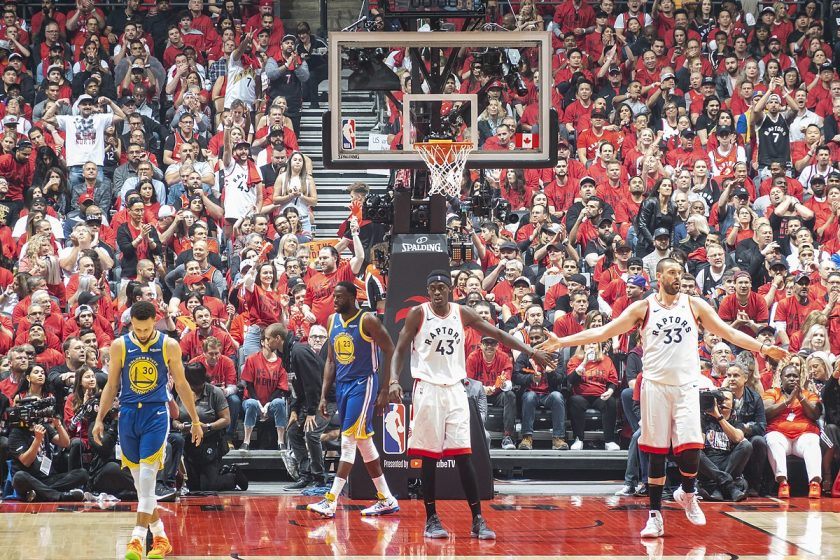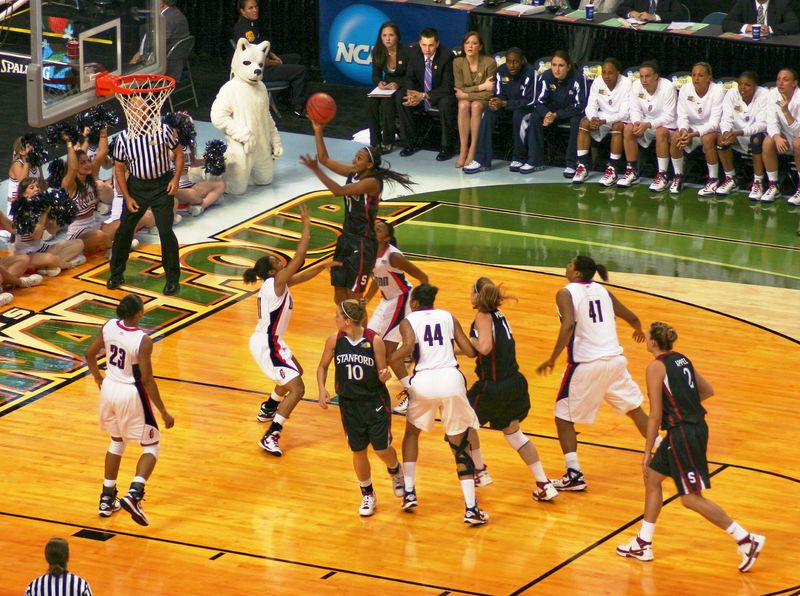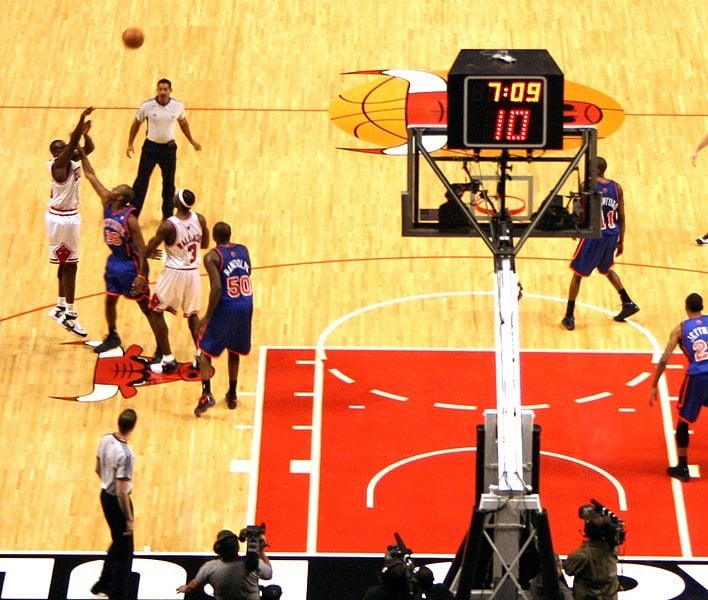Understanding Periods in Basketball: NBA vs. NCAA Game Structure

Introduction to Basketball Game Timing
Basketball games might have similar rules across leagues, but the number and duration of periods can vary widely. Both professional and collegiate levels offer unique formats that influence the flow and viewer experience. From the NBA’s quarters to the NCAA’s halves, understanding these differences is essential for fans and newcomers alike.
NBA Game Periods: Structure and History
The National Basketball Association (NBA) schedules each game for 48 minutes, divided into four quarters lasting 12 minutes each. Between each quarter, players and teams receive a brief rest of about 2.5 to 3.5 minutes, while halftime pauses the game for 15 minutes.

Image credit: Wikipedia Commons
Originally, NBA games followed a format of two 20-minute halves when the league launched as the Basketball Association of America in 1946. In 1951, this was switched to four 10-minute quarters, and by 1954, the current structure of four 12-minute quarters was adopted. This longstanding setup has shaped the modern pace and physical demands of the league.
Concerns over player fatigue have occasionally sparked discussions about changing the game length. In the 2014 preseason, a 44-minute game was tested, but the idea was not implemented permanently. Instead, experts concluded that reducing the season length would more effectively address player workload.
WNBA Game Format: Adopting Four Quarters
Women’s National Basketball Association (WNBA) games take a slightly different approach with four quarters, each lasting 10 minutes.
Initially, the WNBA featured games of two 20-minute halves from its debut in 1996 until 2005. Beginning in 2006, the league adopted the current four-quarter format.
Halftime in the WNBA lasts 15 minutes, and shifting from halves to quarters allowed the team foul count to reset every 10 minutes. This change reduced the number of free throws and accelerated the game’s tempo, resulting in a more engaging viewing experience.

Image credit: Wikipedia Commons
NCAA Men’s Basketball: The Two-Halves Tradition
Unlike pro leagues, NCAA Men’s basketball games consist of two halves, each 20 minutes long.
When James Naismith created basketball in 1891, his first rulebook specified two 15-minute halves for each game. By 1905, this had been expanded to the current two 20-minute half format, accompanied by a 15-minute midgame break.
Though the NCAA briefly tested four quarters during the 1951-52 season, the experiment ended two years later, and the game returned to its two-half standard. Experts argue that longer halves foster a better game rhythm, which can lead to closer matchups and more excitement for spectators.

Image credit: Chad Cooper/Flickr, CC BY 2.0
Importantly, the current two-half format allows for four media timeouts per half, which is a significant advantage for television broadcasting and advertising revenues. Adopting the four-quarter model would decrease the number of commercial breaks, potentially impacting deals with media partners.
NCAA Women’s Basketball: Transition to Quarters
The structure of NCAA Women’s basketball underwent a significant change beginning in the 2015-2016 season. Today, women’s college games consist of four quarters, each 10 minutes in length; previously, games mirrored the men’s with two 20-minute halves.
Now, both the NCAA Women’s game and the WNBA share the same quarter-based format, including a 15-minute halftime. The move was part of broader efforts to make games more dynamic and appealing, as highlighted by committee members who pushed for the enhancement of game flow and presentation.

Image Credit: Wikipedia Commons
This structural update has coincided with a notable surge in viewership. For example, the 2023 NCAA women’s final pulled in approximately 10 million viewers—an impressive increase compared to previous years.
Comparing Game Length Across Leagues
One major distinction in basketball is game duration. Since 1954, NBA contests have lasted 48 minutes. NCAA Men’s games, as well as WNBA and NCAA Women’s matches, are each 40 minutes long.

Image of NBA shot clock: Wikipedia Commons
The different period structures—whether halves or quarters—directly influence match pacing, strategy, and the fan experience across different forms of the game.
What Happens in Overtime?
If the score is tied at the end of regulation in the NBA, WNBA, NCAA Men’s, or NCAA Women’s games, overtime periods are used to decide the winner. Each overtime lasts five minutes. Overtimes repeat until one team comes out ahead.
Summary Table: Periods and Halves in Major Basketball Leagues
| League | Number of Periods | Length of Each Period | Total Regulation Time | Halftime Duration |
|---|---|---|---|---|
| NBA | 4 Quarters | 12 minutes | 48 minutes | 15 minutes |
| WNBA | 4 Quarters | 10 minutes | 40 minutes | 15 minutes |
| NCAA Men’s | 2 Halves | 20 minutes | 40 minutes | 15 minutes |
| NCAA Women’s | 4 Quarters | 10 minutes | 40 minutes | 15 minutes |
Conclusion: Distinct Game Formats, Shared Excitement
While the NBA, WNBA, and NCAA each use their own game structures—ranging from halves to quarters—these differences reflect the unique histories and strategic priorities of each league. Regardless of the format, the design of basketball periods shapes the pace, tactics, and excitement enjoyed by players and fans alike.
Lead image credit: Wikipedia Commons









